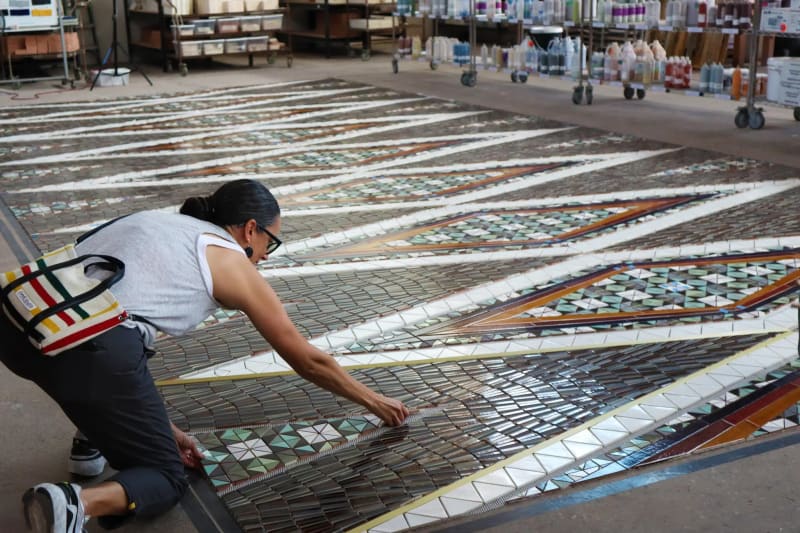Culinary passion and art-making can flourish together in the right hands, such as those of Rirkrit Tiravanija, who has explored meals-as-art-medium, and the artist-founded restaurant Food, started in SoHo in the early 1970s by Gordon Matta-Clark and others.
Now, the Whitney Museum of American Art is rebooting its restaurant spaces with commissioned artworks by two top contemporary makers, Rashid Johnson and Dyani White Hawk, and their works are also entering the museum’s collection.
“We didn’t design these spaces and then ask artists to fill a spot,” said Scott Rothkopf, who took over as Whitney director from Adam D. Weinberg on Wednesday. “We asked the artists first, and found out what they wanted to do. It’s a very Whitney way of doing it.”
This month, the ground floor space, which once housed the Untitled restaurant, will become a cafe from Frenchette Bakery, making it a second branch of the casual TriBeCa outpost by the team behind the high-end Frenchette and Le Rock restaurants. It will feature take-away fare at first, and sit-down dining in the future. White Hawk’s work will be installed in December on the museum’s eighth floor.
White Hawk’s work, a wall of colorful ceramic tiles called “Nourish,” will be installed in a space that was formerly Studio Bar. But the cafe won’t open until sometime in 2024. (Both cafes are designed by the New York architectural firm Modellus Novus.)
White Hawk, a Minneapolis-based artist, won a MacArthur Foundation award, known as the “genius grant,” in early October. She said in an interview that “Nourish” represented a series of firsts: It’s her largest work to date (more than 30 feet wide), her first work in ceramic tile and her first commission for a permanent installation in a museum. She collaborated with Mercury Mosaics, a Minneapolis ceramics specialist.
“I wanted to build off the work I had in the Biennial,” White Hawk said of her 2022 Biennial piece, “Wopila|Lineage,” made of painted aluminum panels. It also relates to her ongoing series “Quiet Strength.”
The artist is Sičangu Lakota, and she said that her goal was to “center the Lakota aesthetic, and put Lakota abstraction front and center in a way it hasn’t been.”
She added: “I want people to walk away knowing that abstraction predated the 1940s and 1950s. That’s the narrative we are fed.”
...
Read full article at nytimes.com.

